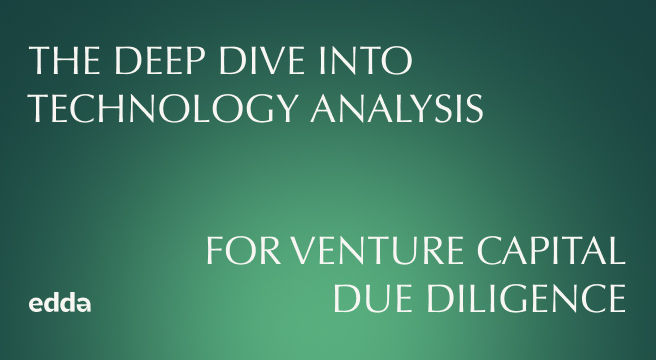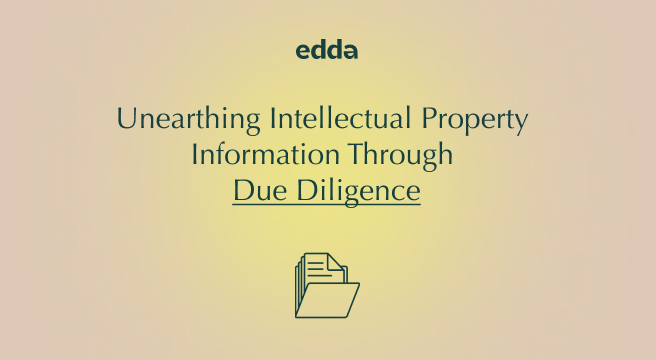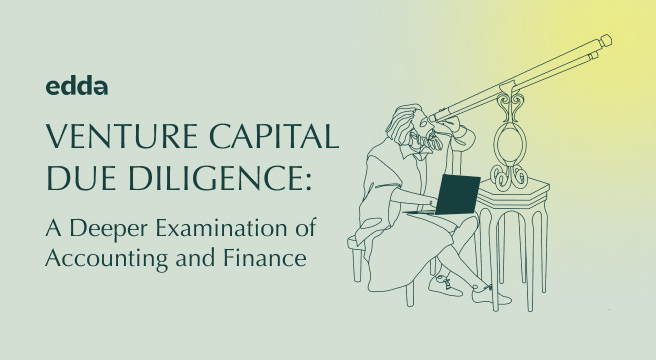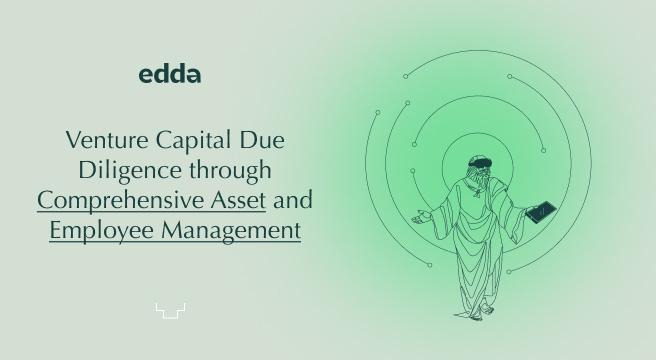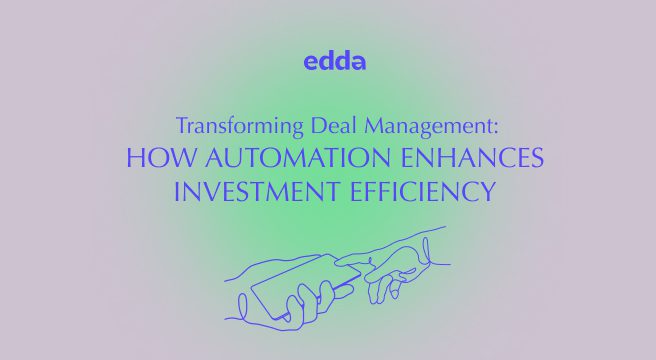Venture Capital (VC) due diligence is a linchpin in the world of investment decisions, setting the course for potentially lucrative investment in innovative, technology-driven startups. Of the several facets involved in this rigorous examination, a comprehensive analysis of the startup’s core technology plays a pivotal role.
This is where the essence of a startup’s potential for market disruption and scalability is discovered and understood. This article dives into the nuances of a detailed technology analysis during the VC due diligence and how venture capitalists can effectively carry out this task, using the invaluable insights from Edda’s VC due diligence checklist.
Technology: The Core of a Startup’s Potential
In the realm of startups, technology forms the engine that propels their journey towards market disruption and scalability. It’s the powerhouse that feeds innovation and lends startups their unique edge. Thus, venture capitalists need to conduct an exhaustive examination of a prospective company’s technological foundation during due diligence. A deep technology analysis can unlock insights into the following critical aspects:
- The distinctiveness of the technology and its potential to carve out a lasting competitive edge.
- The scalability potential of the technology, determining the growth trajectory of the startup.
- The existing and potential legal and regulatory implications associated with the technology.
- The market readiness of the technology and the challenges or ease associated with its implementation.
- The strength of the startup’s IT infrastructure, encompassing security measures, data handling, and disaster recovery plans.
Diving Deeper: Key Elements of Technology Analysis in Due Diligence
Uniqueness: The Key to Disruption
Uniqueness in the tech space is a critical element that drives disruption and fosters a startup’s competitive advantage. A startup’s unique technology—be it an inventive algorithm, a proprietary piece of hardware, or an ingenious service delivery method—can act as its differentiator, catapulting it above the competition and marking it out as a force to be reckoned with. But this doesn’t always mean creating something entirely new from scratch. At times, it’s about making substantial improvements to existing solutions or processes, thereby providing unprecedented value to consumers, solving their pain points more effectively, or catering to a niche that’s been overlooked by others.
During due diligence, venture capitalists should meticulously evaluate the novelty of a startup’s technology. A deep dive into patent databases, industry literature, and competitor offerings can shed light on whether the startup’s innovation is truly unique or just a minor tweak on an existing product or service. Additionally, the potential scalability and profitability of the startup’s unique solution should also be taken into account. An innovation that not only disrupts the status quo but also promises strong market traction and profitability is a highly attractive prospect for investors. The key here is to discern genuine, market-shaping innovation from mere novelty—a challenge that forms the crux of technology-focused due diligence.
Scalability: The Catalyst for Growth
Scalability embodies a startup’s potential to amplify its reach and operations while maintaining or even enhancing its performance levels. It’s a litmus test of the technological foundation that supports the startup, determining whether it can withstand an increase in workload, burgeoning user numbers, or evolving market trends. A scalable technology is one that’s adaptable, flexible, and designed to grow without buckling under the weight of its own success. It’s an indicator of a startup’s long-term viability and its capacity to meet future demand.
In the due diligence process, a thorough assessment of the startup’s technology scalability is paramount. This involves examining its ability to handle exponential user growth, integrate with other systems, and adapt to new technology trends. It’s also essential to gauge the financial implications of scaling—whether the cost of scaling matches the anticipated revenue growth. Investors should also examine the team’s skill set to ensure they have the ability to execute the scaling process. A startup with a scalable model is not just well-positioned to seize market opportunities but is also a promising candidate for delivering substantial return on investment.
Legal and Regulatory Compliance: Navigating the Complex Terrain
As technology continues to evolve and traverse new frontiers, it often walks the tightrope of legal and regulatory environments, making it imperative to factor in these considerations during the due diligence process. Venture capitalists should delve into a comprehensive review of all legal and regulatory facets tied to the startup’s technology. This entails a meticulous evaluation of patent statuses, the compliance status with ever-changing data protection and privacy regulations, and a profound analysis of the startup’s intellectual property rights.
Yet, the task doesn’t stop at understanding the present legal framework and its implications; it extends to anticipating potential shifts in the regulatory landscape and their impact on the startup’s operations. It’s also crucial to explore the potential legal risks, which could emerge in the form of infringements, disputes, or violations. Moreover, understanding how well the startup is prepared to handle these legal challenges is vital.
For instance, does the startup have a robust legal strategy in place to protect its intellectual property? Has it taken adequate steps to ensure its technology complies with the current regulations and can adapt to future changes? The answers to these questions can offer valuable insights into the startup’s resilience and its ability to thrive amidst complex legal and regulatory terrains. Thus, legal and regulatory compliance forms a critical component of due diligence, helping to steer clear of future legal entanglements and ensuring the sustainability of the startup.
Market Readiness and Ease of Implementation: Bridging the Gap Between Innovation and Market
Startups’ success isn’t solely dependent on groundbreaking technology; market readiness and user adoption also play pivotal roles. During due diligence, venture capitalists should assess a technology’s readiness for broad-scale deployment, considering factors like user-friendliness, compatibility with existing systems, and market need. Furthermore, the ease of adoption by the target market is crucial. Questions around the necessity of significant shifts in user behavior, learning curves, and technology compatibility must be addressed.
An analysis of implementation costs, required resources, and potential barriers is also indispensable. This includes understanding high entry costs, technological complexities, or regulatory hurdles, along with the startup’s strategies to navigate these obstacles. The gap between technological innovation and successful market deployment is often vast, so due diligence should assess the startup’s plan to bridge this. Understanding the go-to-market strategy, user onboarding process, and scalability plans will provide investors with a well-rounded view of the technology’s market penetration potential and growth prospects.
IT Infrastructure and Data Security: Building a Fortified Foundation
In the face of escalating cybersecurity threats, a strong IT infrastructure and stringent data security measures are paramount for any startup. Venture capitalists should, therefore, scrutinize the startup’s cybersecurity protocols, data handling and storage practices, disaster recovery plans, and the overall health of the IT infrastructure. This analysis should also assess how the startup stays abreast of evolving cybersecurity trends and measures.
Leveraging Edda’s Due Diligence Questionnaire for Technology Analysis
Edda’s Venture Capital Due Diligence Questionnaire serves as a powerful tool that can significantly streamline and add depth to the technology analysis process during due diligence. This questionnaire is meticulously designed to probe into every critical aspect of a startup’s technology, prompting venture capitalists to ask incisive questions such as:
- How exclusive are the startup’s rights to its technology?
- What are the prospects for the technology’s scalability? Can it cater to a rapidly expanding user base?
- Is the technology fully compliant with applicable regulations? Are there any looming legal risks?
- How prepared is the technology for the market? How seamlessly can the target market adopt it?
- What protocols and measures does the startup have in place to protect its technology and data?
Venture capitalists leveraging Edda’s questionnaire during their due diligence can ensure a more effective, comprehensive, and systematic technology analysis, leaving no stone unturned.
Edda’s venture capital management software and dealflow CRM is a transformative tool for venture capitalists, optimizing the evaluation process of startups’ technology. By focusing on critical elements like technological uniqueness, scalability, legal and regulatory compliance, market readiness, and IT infrastructure and data security, Edda (formerly Kushim) offers a robust and in-depth analysis.

